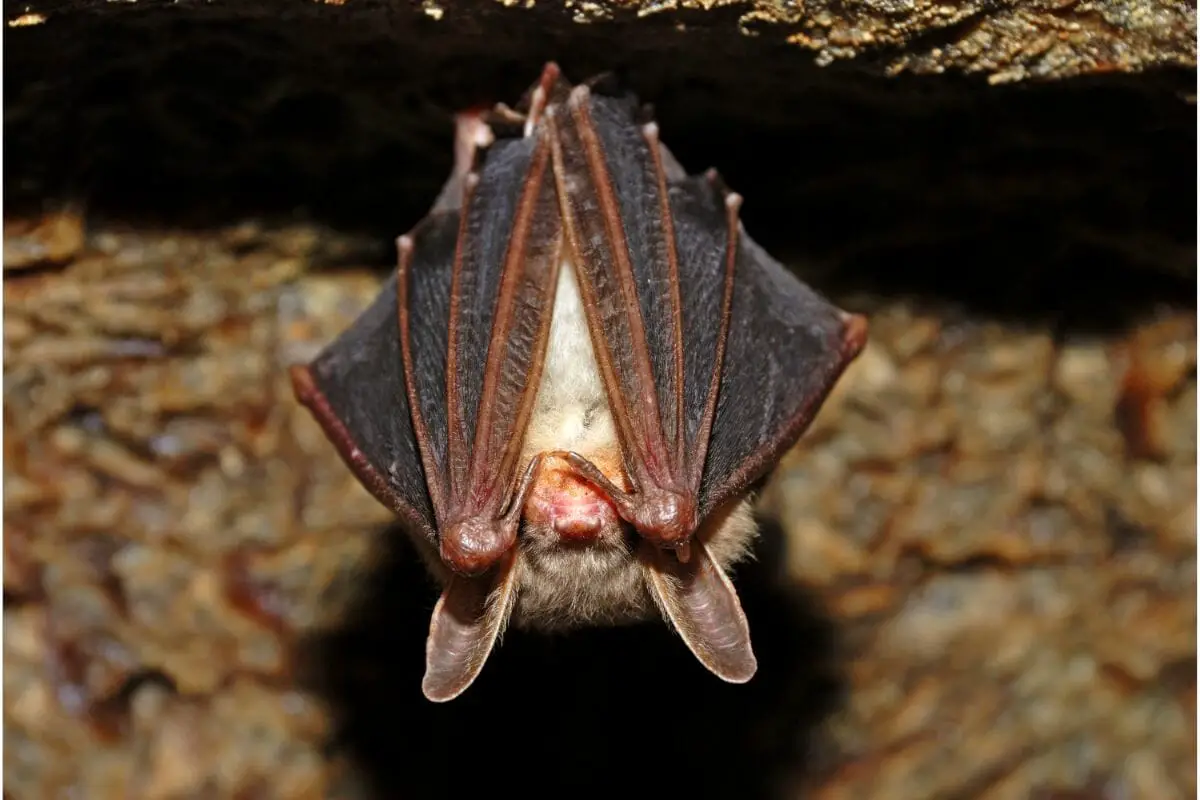Our planet is home to all sorts of weird and wonderful animals, and life has found ways to survive in even the most unlikely of places.
While caves might not be most people’s idea of an ideal home, many creatures have made their habitats in the dark caverns beneath the Earth’s surface.

In this guide, we’ll take you through some of the fascinating animals that have made their homes in caves, looking at how these creatures have adapted to life underground!
Animals That Live In Caves
1. Bats
Bats are known for living in dark, isolated areas, and caves make the perfect habitats for bats to find some peace and quiet.
Caves also offer the optimum temperatures and humidity for bats to thrive in, as well as provide protection against predators.
Because many types of bats use echolocation to navigate their surroundings, the enclosed space within a cave is perfect for helping a bat find its prey.
Most species of bats are completely nocturnal, and they hunt outside of caves during the night before heading back for shelter and rest during the day.
Not every bat species lives in caves, but many varieties such as the gray bat or Mexican free-tailed bat are more than comfortable in their cave habitats.
2. Black Bear
Bears might not be the first animals you think of as cave-dwellers, but black bears frequently make their dens in caves due to the protection and warmth they provide.
This is ideal during the winter months, and black bears will use their cave dens as shelter against the harsh winter climates.
Brown bears may also make their dens in caves for hibernation, where they will enter a deep sleep for most of the winter! However, their respective habitats mean that black bears are more likely to be found living in a cave.
3. Yellow-Red Rat Snakes
Cold-blooded creatures like reptiles need to regulate their temperature using their surroundings; because caves maintain a fairly consistent and cool temperature throughout the day (typically only around 50℉), most reptiles will only inhabit a cave to cool off during the hottest parts of the day.
However, some snakes live in caves full-time. In fact, a cave in southern Mexico is known as the ‘Cave of the Hanging Serpents’, named after the snakes that inhabit it.
Here, yellow-red rat snakes dangle from the cave ceiling. Despite being both deaf (see also: Animals That Are Deaf)and blind, these snakes can sense vibrations in the air caused by the bats that fly in and out of the cave entrance, and hang down to catch the bats as they pass.
4. Olm
One of the more unusual animals on this list, the olm is a species of salamander native to the caves of central Europe. Olms look somewhat like an axolotl, although the two species aren’t directly related.
They have long, pale bodies with four thin legs, and their heads are flat with the same feathery gills as axolotls.
Olms have incredibly long lifespans, and typically live to around 70 years of age.
However, some olms can live for up to a century. They are also fairly inactive animals; olms in the wild can go for a decade without eating, and can go for years without even moving!
5. Remipedes
Remipedes inhabit coastal underwater caves, and actually refers to a wide variety of blind cave-dwelling crustaceans.
They live in the subtropical waters of Central America and the Caribbean, where they feed primarily on shrimp and small fish that they share an ecosystem with.
Remipedes use powerful venom to subdue and kill their prey. Despite only being around 1-2 inches in length, their venom is capable of killing prey several times larger than themselves.
6. Cave Crayfish
Remipedes aren’t the only cave-dwelling crustaceans out there, and many species of cave crayfish can be found across the whole world. However, they are most commonly found in underground ponds and lakes in the south-eastern United States.
Cave crayfish can live incredibly long lives, upwards of 200 years, which they achieve due to their slow and energy-efficient metabolisms.

This slow metabolism is necessary for the crayfish’s survival, as their underground habitats mean that food is often hard to come by. As a result, they have adapted to survive for long periods without any food.
7. Kaua’i Wolf Spider
The Kaua’i cave wolf spider is known as one of the rarest animals in the world. This is because it is confined to an extremely small habitat – Kaua’i wolf spiders are confined to a few small volcanic caves on the island of Kaua’i in Hawaii.
Unlike other spiders, which are famous for their eight eyes, the Kaua’i wolf spider has no eyes whatsoever.
Without any light in their underground habitat, they have no need for any vision. Instead, they sense subtle vibrations and chemical changes in the air to help them track down their prey.
8. Devils Hole Pupfish
Another incredibly rare animal confined to a single habitat, the Devils Hole pupfish makes its home in a single underwater cavern beneath Death Valley National Park in the Mojave desert.
The Devils Hole pupfish is around the size of a goldfish, and are metallic blue in color. They only live for around a year in total.
Devils Hole pupfish have several unique adaptations that they developed in order to survive in its isolated and extreme habitat.
Unlike other freshwater fish, the Devils Hole pupfish lives in warmer water (around 93℉) with a much lower oxygen saturation than normal.
As a result, the pupfish is able to enter a torpor-like state where it can forgo oxygen for up to two hours. Interestingly, while in this state the fish’s body produces alcohol as a byproduct!
Final Thoughts
Caves are home to some of the most fascinating creatures on the planet, and all sorts of animals have adapted to these habitats in unique and interesting ways.
This list only covers a few of the amazing cave-dwelling animals out there, and there are many more animals that live in caves all throughout the world.
One thing’s for sure – there’s no end to the incredible creatures that we share a planet with!









